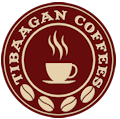Coffee Roasts

Coffee beans arrive from the coffee farms green, hard, tasteless. They are shipped from countries like Ethiopia, Guatemala, Peru, Mexico, and East Timor. Shipped in 132 pound sacks. The green beans smell like grass, hay, or the earth.
When you add heat and carefully watch the temperature and time, you create something delicious sot the world over by billions of people.
Roasting coffee transforms the chemical and physical properties of green coffee beans into roasted coffee products. The roasting process is what produces the characteristic flavor of coffee by causing the green coffee beans to change in taste. Unroasted beans contain similar if not higher levels of acids, protein, sugars, and caffeine as those that have been roasted, but lack the taste of roasted coffee beans due to the Maillard and other chemical reactions that occur during roasting.
The vast majority of coffee is roasted commercially on a large scale, but small-scale commercial roasting has grown significantly with the trend toward “single-origin” coffees served at specialty shops. Some coffee drinkers even roast coffee at home as a hobby in order to both experiment with the flavor profile of the beans and ensure themselves of the freshest possible roast.
- Yellowing: For the first few minutes the bean remains greenish, then turn lighter yellowish and emit a grassy smell.
Steam: The beans start to steam as their internal water content dissipates. - First Crack: The steam becomes fragrant. Soon you will hear the first crack, an audible cracking sound as the real roasting starts to occur: sugars begin to caramelize, bound-up water escapes, the structure of the bean breaks down and oils migrate from their little pockets outward.
- First Roasted Stage: After the first crack, the roast can be considered complete any time according to your taste. The cracking is an audible cue, and, along with sight and smell, tells you what stage the roast is at. This is what is call a City roast.
- Caramelization: Caramelization continues, oils migrate, and the bean expands in size as the roast becomes dark. As the roast progresses, this is a City + roast. Most of our roast recommendations stop at this point. When you are the verge of second crack, that is a Full City roast.
- Second Crack: At this point a second crack” can be heard, often more volatile than the first. The roast character starts to eclipse the origin character of the beans at this point and is also known as aVienna roast. A few pops into second crack is a Full City + roast. Roasting all the way through second crack may result in small pieces of bean being blown away like shrapnel!
- Darkening Roast: As the roast becomes very dark, the smoke is more pungent as sugars burn completely, and the bean structure breaks down more and more. As the end of second crack approaches you will achieve a French roast.
- Beyond !! Too Late! Eventually, the sugars burn completely, and the roast will only result in thin-bodied cup of “charcoal water.”

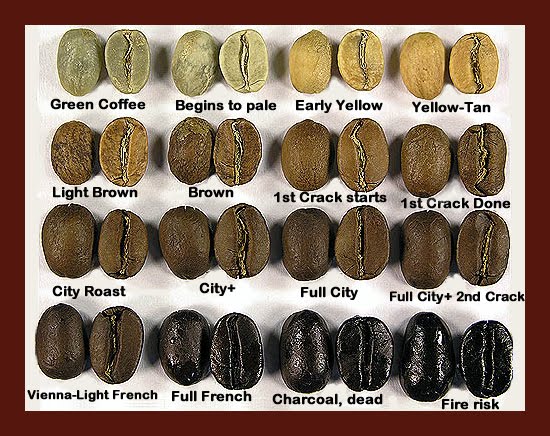
Light Roasts
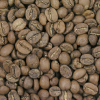
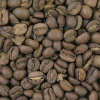 Light roasts are light brown in color, with a light body and no oil on the surface of the beans. Light roasts have a toasted grain taste and pronounced acidity. The origin flavors of the bean are retained to a greater extent than in darker roasted coffees. Light roasts also retain most of the caffeine from the coffee bean.
Light roasts are light brown in color, with a light body and no oil on the surface of the beans. Light roasts have a toasted grain taste and pronounced acidity. The origin flavors of the bean are retained to a greater extent than in darker roasted coffees. Light roasts also retain most of the caffeine from the coffee bean.
Light roasted beans generally reach an internal temperature of 180°C – 205°C (356°F – 401°F). At or around 205°C, the beans pop or crack and expand in size. This is known as the “first crack” (for the “second crack,” see below). So a light roast generally means a coffee that has not been roasted beyond the first crack.
Some common roast names within the Light Roast category are Light City, Half City, Cinnamon Roast (roasted to just before first crack), and New England Roast (a popular roast in the northeastern United States, roasted to first crack).
Medium Roasts
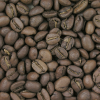
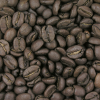 Medium roasted coffees are medium brown in color with more body than light roasts. Like the lighter roasts, they have no oil on the bean surfaces. However, medium roasts lack the grainy taste of the light roasts, exhibiting more balanced flavor, aroma, and acidity. Caffeine is somewhat decreased, but there is more caffeine than in darker roasts.
Medium roasted coffees are medium brown in color with more body than light roasts. Like the lighter roasts, they have no oil on the bean surfaces. However, medium roasts lack the grainy taste of the light roasts, exhibiting more balanced flavor, aroma, and acidity. Caffeine is somewhat decreased, but there is more caffeine than in darker roasts.
Medium roasts reach internal temperatures between 210°C (410°F) and 220°C (428°F) — between the end of the first crack and just before the beginning of the second crack.
Common roast names within the Medium Roast level include Regular Roast, American Roast (the traditional roast in the eastern United States, roasted to the end of the first crack), City Roast (medium brown, a typical roast throughout the United States), and Breakfast Roast.
Medium-Dark Roasts
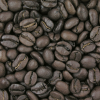
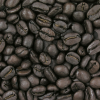 Medium-dark roasts have a richer, darker color with some oil beginning to show on the surface of the beans. A medium-dark roast has a heavy body in comparison with the lighter or medium roasts.
Medium-dark roasts have a richer, darker color with some oil beginning to show on the surface of the beans. A medium-dark roast has a heavy body in comparison with the lighter or medium roasts.
The beans are roasted to the beginning or middle of the second crack — about 225°C (437°F) or 230°C (446°F). The flavors and aromas of the roasting process become noticeable, and the taste of the coffee may be somewhat spicy.
Among the most common names for a medium-dark roast are Full-City Roast (roasted to the beginning of the second crack), After Dinner Roast, and Vienna Roast (roasted to the middle of the second crack, sometimes characterized as a dark roast instead).
Dark Roasts
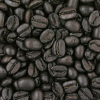
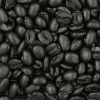 Dark roasted coffees are dark brown in color, like chocolate, or sometimes almost black. They have a sheen of oil on the surface, which is usually evident in the cup when the dark roast coffee is brewed. The coffee’s origin flavors are eclipsed by the flavors of the roasting process. The coffee will generally have a bitter and smoky or even burnt taste. The amount of caffeine is substantially decreased.
Dark roasted coffees are dark brown in color, like chocolate, or sometimes almost black. They have a sheen of oil on the surface, which is usually evident in the cup when the dark roast coffee is brewed. The coffee’s origin flavors are eclipsed by the flavors of the roasting process. The coffee will generally have a bitter and smoky or even burnt taste. The amount of caffeine is substantially decreased.
To reach the level of a dark roast, coffee beans are roasted to an internal temperature of 240°C (464°F) — about the end of the second crack — or beyond. They are seldom roasted to a temperature exceeding 250°C (482°F), at which point the body of the beans is thin and the taste is characterized by flavors of tar and charcoal.
Dark roasts go by many names. As a result, buying a dark roast can be confusing. Some of the more popular designations for a dark roast include French Roast, Italian Roast, Espresso Roast, Continental Roast, New Orleans Roast, and Spanish Roast. Many dark roasts are used for espresso blends.
So there you have it — a short guide to the common coffee roasts from light to dark. To summarize the differences, in addition to the color gradations:
- As coffee roasts get darker, they lose the origin flavors of the beans and take on more flavor from the roasting process.
- The body of the coffee gets heavier, until the second crack, where the body again thins.
- Lighter roasts have more acidity than darker roasts.
- Light roasted beans are dry, while darker roasts develop oil on the bean surface.
- The caffeine level decreases as the roast gets darker.
Ultimately, it’s all about the taste, the flavor, the aroma. You may prefer a lighter roast in the morning (with more caffeine) and a darker one later in the day. Coffee, including the optimal roast level, is a personal preference.


